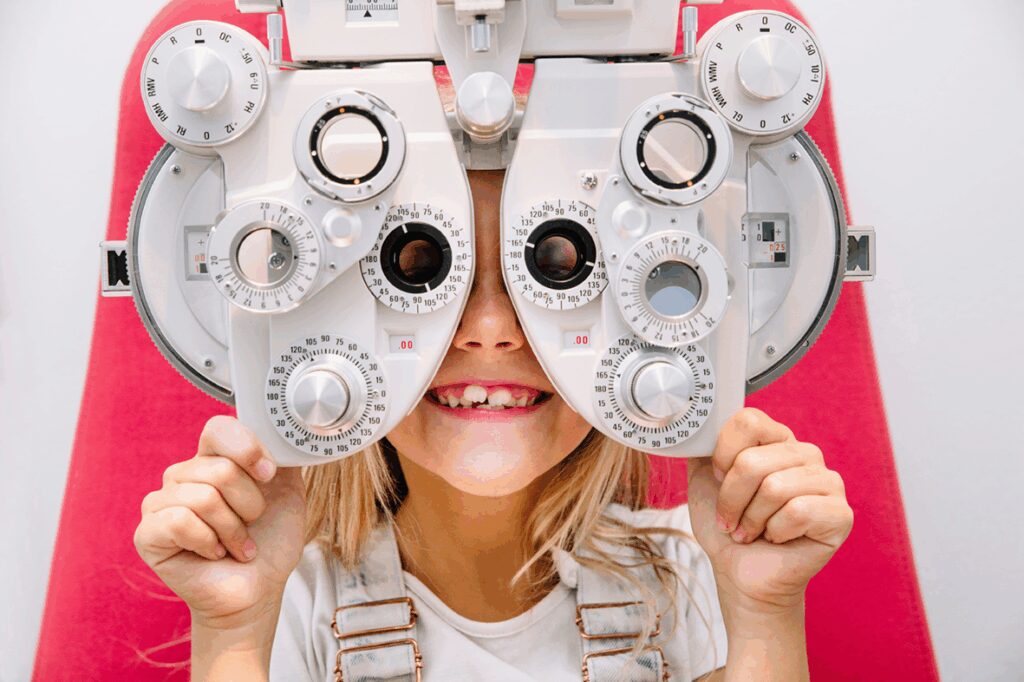EMBARGOED UNTIL 16/04/2025
Bath, UK. April 16th 2025 – Parents of the 735,000 three and four-year-olds being offered a school place today (primary school offer day, 16 April ’25), are urged to get their children’s sight tested before term starts in September to prevent them being disadvantaged in the classroom.
Good sight is essential to give all children the best possible start at school – youngsters with poor vision learn around only half as much as classmates who have good or corrected vision.[i] However, a new report from the charity Eye Health UK reveals that 70% of parents don’t take their children for a sight test before starting school (if EVER), leaving more than 100,000 pupils in the 2025 school starter cohort at risk of falling behind due to an undiagnosed vision problem.[ii]
David Cartwright, optometrist and chair of Eye Health UK explains: “One in five children in the UK has an undiagnosed vision problem that will hinder their learning and development. It’s often difficult for parents, carers or teachers to recognise when a child might be struggling with their eyesight*; however, sight tests are free (on the NHS) for all children at high street optical practices. Children requiring vision correction are also entitled to an NHS voucher that can be used to pay for glasses.”
David continues: “Starting school for the first time can feel stressful for parents and children but ensuring a child’s eyesight is up to scratch can help them settle-in quickly and aid their learning.”
Twenty-one per cent of parents said they relied on school to check their child’s eyesight,[iii] however school vision screening is not a substitute for a comprehensive sight test at a high street optician.[iv] Many Local Authorities also fail to offer screening services. Research by BIOS (British and Irish Orthoptic Society) highlights how school vision screening is a postcode lottery as just 57% of authorities in England offer a service as directed by the National Screening Committee.[v]
Living with an undiagnosed eye condition can have profound consequences for any child. As well as affecting learning it can impact mental health, lead to low self-esteem, trigger headaches; cause difficulties building relationships and making friends, precipitate clumsiness and be mistaken for bad behaviour. Some symptoms also overlap with signs of dyslexia and ADHD.
The Our Children’s Eye Health report found a worrying number of parents are clueless when it comes to caring for their children’s vision and eye health.
Two-thirds (64%) of parents surveyed for the report have no idea how often a child should have their eyes tested; whilst 6 in 10 (59%) parents aren’t aware that children’s sight tests are free at high street opticians. Seventy-five per cent have no idea that the NHS provides eyewear vouchers for children. A quarter (24%) of parents believe that their child does not need a sight test because the child’s eyes are “fine”.[vi]
All children should have their eyes tested at age three to four years and then every one to two years thereafter or as recommended by their optometrist. This advice applies even if you think your child’s eyes are “fine”.
Many parents are also unaware of signs of common childhood eye conditions including shortsightedness (myopia), lazy eye (amblyopia) and squint (strabismus). Fewer than half (49%) thought regular headaches could be linked to poor vision; just a third (33%) linked a turning or tilting head to possible difficulties with how well a child can see, whilst 29% recognised a dislike of bright lights and 13% linked orienting drawings poorly on paper with possible vison problems.
Parents are also failing to make the link between healthy habits and children’s sight. A staggering 86% of parents surveyed were unaware that time outdoors was important for eye health – despite spending two-hours-a-day outdoors being a factor in preventing myopia (short-sightedness).[vii]
Environmental factors during early childhood, particularly those that limit visual input or cause misalignment, play a significant role in the development of other childhood eye conditions too, including amblyopia (lazy eye).
David Cartwright explains: “Limiting screen time and balancing activities that require eyes to focus on close objects, such as reading, with time outdoors as well as engaging in activities to stimulate vision, are crucial, especially during a child’s early years when their eyes continue to develop.”
Protecting young eyes from the sun’s UV and serving up generous helpings of fruit, veg and oily fish are also important ways parents can help keep their children’s eyes healthy but just 32% of parents surveyed were aware of the importance of protecting against UV and only 34% made a connection between diet and eye health.[viii]
The Our Children’s Eye Health report also found that for 9 in 10 parents their local opticians would not the first place they would seek help if their child experienced problems with their eye health despite many practices offering NHS appointments for urgent and minor eye conditions.
Routine sight tests from age three or four are crucial to give kids the happiest, healthiest start in life. Read the Our Children’s Eye Health report and discover more at www.visionmatters.org.uk
ENDS

